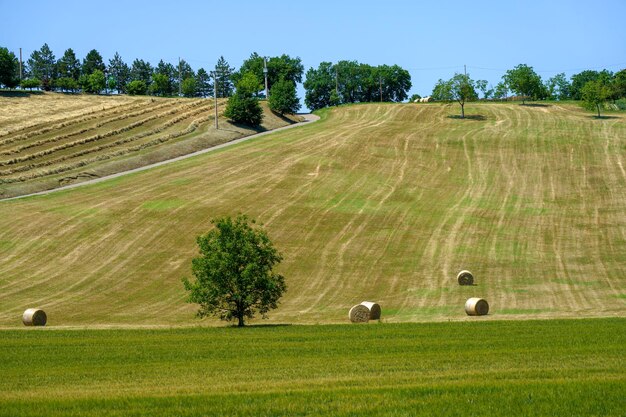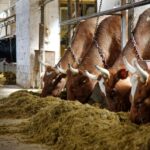Soil erosion is a serious problem for farmers worldwide, and South Africa is no exception. The loss of topsoil, caused by wind, water, and human activity, can significantly affect crop productivity, soil health, and farm sustainability. Soil erosion reduces the ability of the land to retain moisture, nutrients, and organic matter, which are vital for healthy plant growth. Implementing effective soil erosion control methods is essential to ensure long-term farm productivity. However, many farmers make common mistakes when attempting to control soil erosion, which can undermine their efforts. In this article, we will explore ten common mistakes and how to avoid them.
1. Ignoring the Root Cause of Erosion
Soil erosion often results from a combination of factors, including poor soil structure, excessive water runoff, and wind. One of the biggest mistakes farmers make is focusing solely on the symptoms of erosion (such as visible gullies or bare patches) instead of addressing the root causes. Without understanding the underlying issues, soil erosion control measures may be ineffective in the long term.
Solution: Conduct a comprehensive assessment of your farm to identify the specific causes of erosion. Factors such as slope, soil type, land use, and rainfall patterns play a crucial role in erosion. Work with soil experts to determine the most appropriate erosion control strategies for your farm’s unique conditions.
2. Overuse of Tillage
Tillage is a common practice in South African farming, especially for preparing seedbeds. However, excessive tillage can lead to soil compaction, loss of soil structure, and reduced organic matter. These consequences can exacerbate soil erosion by making the soil more susceptible to water and wind movement.
Solution: Reduce the frequency of tillage and explore alternative methods such as no-till or minimum tillage farming. These methods help preserve soil structure, reduce erosion, and enhance water infiltration. No-till farming, in particular, helps maintain a protective cover of plant residues on the soil surface, which reduces water runoff and wind erosion.
3. Failure to Plant Cover Crops
Cover crops, such as legumes, grasses, and clovers, are an essential tool for controlling soil erosion. They provide ground cover, protect soil from raindrop impact, and reduce surface water runoff. However, many farmers overlook the importance of planting cover crops or fail to manage them effectively.
Solution: Choose appropriate cover crops that suit your region’s climate and soil type. In areas with high rainfall, use deep-rooted cover crops like legumes that can stabilize the soil and fix nitrogen. In drier regions, consider drought-resistant grasses. Planting cover crops in between growing seasons will help improve soil health, reduce erosion, and promote biodiversity.
4. Neglecting Contour Farming and Terracing
Contour farming and terracing are effective methods of reducing soil erosion on sloped land by slowing down water runoff and preventing soil from being washed away. Unfortunately, many farmers fail to implement these techniques, particularly on hilly or uneven terrain.
Solution: Implement contour farming by plowing along the contours of the land. This practice helps slow down water runoff, allowing it to infiltrate the soil instead of washing it away. On steeper slopes, terracing can be an effective solution. Terraces reduce the speed of water flow and create flat areas where crops can be planted, reducing the risk of erosion.
5. Not Managing Water Flow Properly
Water is one of the primary agents of soil erosion. When water flows too quickly across the land, it can carry away valuable topsoil. Farmers often make the mistake of not managing water flow properly, leading to excessive runoff and erosion.
Solution: Implement proper water management strategies, such as building swales, ditches, or berms to control water flow across the land. These structures can direct water away from vulnerable areas and help it infiltrate the soil. Additionally, installing infiltration pits or ponds can help trap water and reduce surface runoff, particularly during heavy rainfall.
6. Ignoring the Importance of Wind Erosion Control
While water is the most common cause of soil erosion, wind can also be a major contributor, particularly in dry, arid regions. Many farmers focus solely on water erosion and neglect the impact of wind erosion. Without proper control measures, wind can strip away topsoil, especially in areas with little vegetative cover.
Solution: Establish windbreaks using trees, shrubs, or tall grasses to reduce wind speed and protect the soil from erosion. Windbreaks are effective in reducing the impact of wind on soil, especially in areas with dry conditions and frequent strong winds. Additionally, mulching and maintaining ground cover will help reduce the effects of wind erosion.
7. Inadequate Mulching
Mulching is an effective way to protect the soil surface from both water and wind erosion. However, many farmers do not mulch adequately or use the wrong types of mulch. Insufficient or inappropriate mulching can lead to poor soil protection and increased erosion.
Solution: Use organic mulches such as straw, grass clippings, or wood chips to cover the soil surface. Organic mulches help reduce water runoff, improve soil moisture retention, and prevent wind erosion. Apply a thick layer of mulch (about 5-7 cm) to ensure maximum protection. Avoid using synthetic mulches that can inhibit water infiltration and soil aeration.
8. Underestimating the Role of Grazing Management
Overgrazing by livestock can significantly contribute to soil erosion, as it strips away vegetation, leaving the soil exposed. When plants are grazed down to the root, the soil becomes more vulnerable to wind and water erosion. Despite this, many farmers do not implement effective grazing management strategies.
Solution: Implement rotational grazing systems to allow pasture to recover and regrow. By rotating grazing areas, livestock are prevented from overgrazing specific sections of the land. This helps maintain ground cover, which reduces soil erosion and promotes better soil health. Additionally, consider integrating cover crops into grazing areas to further reduce erosion risks.
9. Ignoring Erosion Control on Fencelines and Roadways
While many farmers focus on erosion control within crop fields, they often overlook areas like fencelines, roads, and farm tracks, where soil erosion can also occur. The lack of attention to these areas can lead to significant soil loss and increased runoff.
Solution: Implement erosion control measures along fencelines and roads by planting grass or installing silt fences to slow water movement. You can also use geotextiles or gravel on farm roads and tracks to prevent erosion. These small but important areas should not be neglected, as they contribute to overall soil erosion on the farm.
10. Lack of Monitoring and Regular Maintenance
Soil erosion control measures require continuous monitoring and maintenance to ensure their effectiveness. Many farmers fail to monitor the success of their erosion control practices or make necessary adjustments over time. Without regular upkeep, control measures can become ineffective or even counterproductive.
Solution: Regularly assess the effectiveness of your erosion control practices by checking soil condition, water runoff, and vegetation growth. Repair any damaged terraces, ditches, or windbreaks as needed. Also, continue to update your erosion control strategies as farming conditions change due to weather patterns, crop types, or new farming practices.
Soil erosion is a serious challenge that can have long-term consequences for your farm’s productivity and sustainability. By avoiding these common mistakes and implementing appropriate soil erosion control measures, you can protect your soil, improve crop yields, and enhance farm resilience. A holistic approach that includes proper land management, vegetation cover, water control, and regular monitoring will help ensure that your farm remains productive and environmentally sustainable for years to come. Remember, controlling soil erosion is not a one-time effort but an ongoing process that requires commitment and careful management.
Join 'Farmers Mag' WhatsApp Channel
Get the latest Farming news and tips delivered straight to your WhatsApp
CLICK HERE TO JOIN






